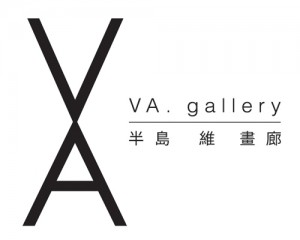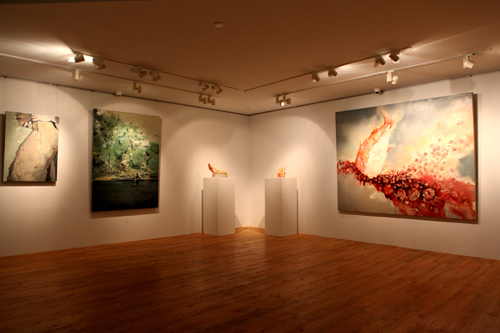Removed – Li Hongju Solo Exhibition 2011
Through thirty years of shifting identities – farmer, cadre, artist – in the city and country, within systems and society, between the different stations of traditional and contemporary art, Li Hongjun uses his different identities – removed and returning.
In the 1980s, Li Hongjun created his piece “the Progression of Seasons.” If we can say it is a study of traditional folk art, then the series of sketches “Landscape on Three Sides” can be called a corresponding between Chinese traditional art and Western modern art. From the oil series “Wife, Baby, Rooster” of the early 1990s to the installation series “Red Spider”, he made the difficult transition from traditional art to modern art. The paper work “Dao? Utensils” in 1995 paved the way for Li Hongjun’s paper media art. But in 1996 he left contemporary art and returned to his art unit, and there he stayed until 2006, when he received his master’s degree from CAFA. In his 10-year absence, Li Hongjun studied traditional folk art in the countryside of Shaanxi Province while caring for his wife during a long illness.
In 2006 Li Hongjun once again left his work unit and family and gave up his study of traditional culture. He came back to Beijing to focus on his paper creations, and broaden his expression of the language of paper and survival. Li Hongjun’s work seems simple but it is logical and orderly, like a specialized mathematical model, and it shows his respect for the topology of pure three-dimensional space. Using this topology, the layers of archaeology and echoes of anthropology, Li Hongjun created “Myself”, “Offset”, “Hollow Space”, “Drift Away”, “Expansion”, “Rotating Head” and “Curled Diagonal Line”. His usage of negative and positive shapes, addition and subtraction, rotation and skewing enriches the language of paper and its expression of tension. The playing of cards, the placement of a paper napkin – his unique and strange way of doing things expresses his own his life experiences. After our initial surprise, his work makes us feel that art is as much a part of us as skin is a part of our bodies.
If innovation can be called the life force of art, then every innovation can be regarded as a removal. Every removal is an experience gained, a new exploration and challenge. Li Hongjun’s work will bring its viewers new surprises and fresh flavors.
Wang Xinyou
August ,2011 Beijing


